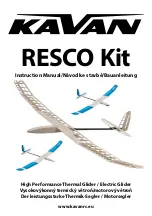
SECTION 7
CESSNA
NORMAL PROCEDURES
MODEL 162
GARMIN G300
U.S.
LANDING
NORMAL LANDING
Normal landing approaches can be made with power on or power off
with any flap setting within the flap airspeed limits. Surface winds and
air turbulence are usually the primary factors in determining the most
comfortable approach speeds. Slips to landing are very effective may
be performed in all flap configurations.
Landing at slower speeds will result in shorter landing distances and
minimum wear to tires and brakes. Power should be at idle as the main
wheels touch the ground. The main wheels must touch the ground
before the nosewheel. The nosewheel must be lowered to the runway
carefully after the speed has diminished to avoid unnecessary nose
gear loads. This procedure is very important for rough or soft field
landings. Directional control should be maintained using up to full
rudder deflection and differential braking as necessary.
SHORT FIELD LANDING
For a short field landing in smooth air conditions, approach at 50 KIAS
with FULL flaps using enough power to control the glide path. Slightly
higher approach speeds should be used in turbulent air conditions.
After all approach obstacles are cleared, smoothly reduce power and
hold the approach speed by lowering the nose of the airplane. The
main wheels must touch the ground before the nosewheel with power
at idle. Immediately after the main wheels touch the ground, carefully
lower the nosewheel and apply heavy braking as required. For
maximum brake performance, retract the flaps, hold the control stick full
back, and apply maximum brake pressure without skidding the tires or
loosing directional control. Use of full rudder authority will assist
directional control.
(Continued Next Page)
162PHUS-01
7-40
Summary of Contents for 162 SKYLANE
Page 2: ......
Page 4: ......
Page 18: ......
Page 20: ......
Page 52: ......
Page 54: ......
Page 72: ......
Page 74: ......
Page 104: ......
Page 112: ...SECTION 5 CESSNA PERFORMANCE MODEL 162 GARMIN G300 U S Figure 5 1 162PHUS 00 5 10 ...
Page 114: ...SECTION 5 CESSNA PERFORMANCE MODEL 162 GARMIN G300 U S Figure 5 3 162PHUS 01 5 12 ...
Page 115: ...CESSNA SECTION 5 MODEL 162 PERFORMANCE GARMIN G300 U S Figure 5 4 5 13 162PHUS 01 ...
Page 116: ...SECTION 5 CESSNA PERFORMANCE MODEL 162 GARMIN G300 U S Figure 5 5 162PHUS 01 5 14 ...
Page 117: ...CESSNA SECTION 5 MODEL 162 PERFORMANCE GARMIN G300 U S Figure 5 6 162PHUS 01 5 15 ...
Page 118: ...SECTION 5 CESSNA PERFORMANCE MODEL 162 GARMIN G300 U S Figure 5 7 162PHUS 01 5 16 ...
Page 124: ......
Page 206: ......
Page 232: ......
Page 234: ......
Page 242: ......












































